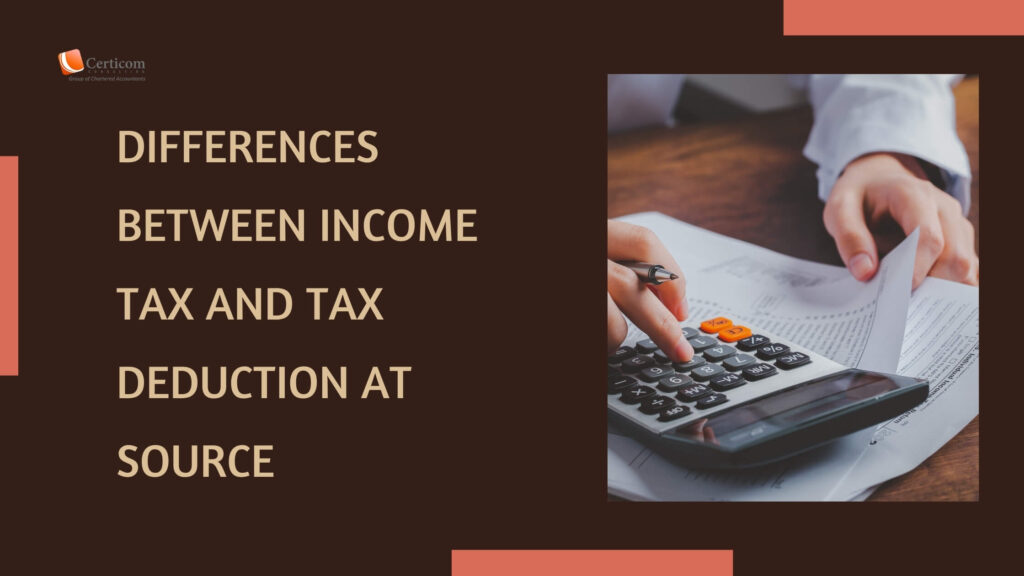What are the differences between income tax and tax deduction at source?

The two phrases that Indian taxpayers encounter most frequently are income tax and tax deducted at source (TDS). Despite their apparent similarities, they are very different from one another. The primary distinction between TDS and revenue Tax is that the former is subtracted from the taxpayer’s annual return or total profit, while the latter is subtracted from the payer’s revenue sources in accordance with the anticipated tax burden. Furthermore, the mechanisms for collecting both taxes are different.
Income Tax
Income tax is a levy imposed on the yearly income a person or business earns within the fiscal year. The Income Tax Act of 1961, which establishes the guidelines for tax assessment, computation, and collection, governs it. It covers a variety of income streams, including capital gains, earnings from real estate, profits from a career or business, and salaries. Anyone making more than Rs. 2.5 lakhs (under the previous tax system) or ₹3 lakhs (under the current tax regime) must pay income tax; failing to do so is penalized by law as tax evasion.
- Anyone earning more than ₹3 lakhs (new tax regime) or 2.5 lakhs (old tax regime) annually
- For senior citizens who are more than 60 years old and less than 80 years old, the limit is 3 Lakhs
- For senior citizens who aged more than 80 years, the limit is 5 Lakhs
Tax Deduction at Source
When tax is withheld from an individual’s primary source of income and sent straight to the government, it’s known as tax deducted at source, or TDS. When making certain payments, such as salaries, interest, rent, or professional fees, people or organizations are required by law to deduct a predetermined proportion of taxes from the payment amount. This is known as TDS. It is essential for stopping tax evasion and makes the process of collecting taxes easier.
- Salary Payment
- Revenue from Rentals and Investments
- Cash obtained from winning lotteries, games of chance, prizes, puzzles, and related activities.
- Insurance commissions
- Contractor payments, brokerage fees, commissions, and other expert costs
- Payments from a number of sources, including the National Savings Plan.

Differences between Income Tax and TDS
TDS is deducted at the source of income throughout the year, whereas the taxpayer pays Income Tax at the end of the financial year.
The payer (employer or financial institution) deducts TDS and remits it to the government, while the taxpayer directly pays Income Tax after calculating their tax liability.
TDS tax rates are determined by the government based on the nature of payment, with no payer intervention, whereas Income Tax rates depend on income slabs outlined in Tax Laws.
TDS applies to payments such as salary, interest, rent, professional fees, etc., while Income Tax is imposed on the total annual income, including salary, capital gains, etc.
Related Post
Aadhaar OTP a Must for PAN Registration: New Income Tax Portal Rule
Income Tax Benefits for Senior Citizens: What You Can Claim in AY 2025-26
Book A One To One Consultation Now For FREE
How can we help? *




